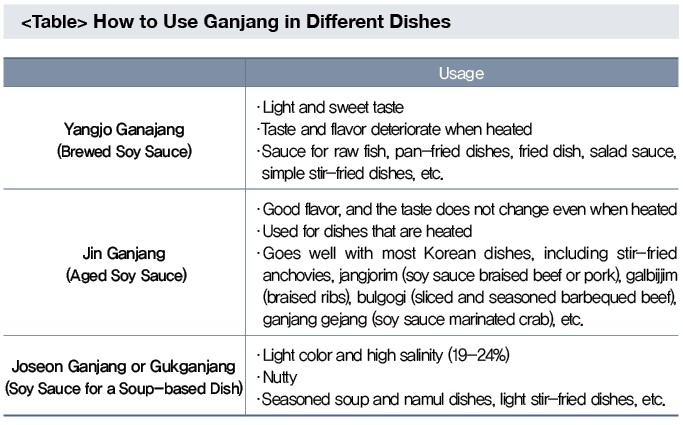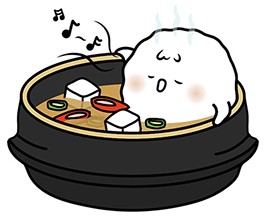한식 읽기 좋은 날
Vol 39. Jang
Curious about Jang?!
Let’s Take a Look at Jang with Bapdol
Korean jang, which represents the taste and identity of Korean food, still occupies an important place in our table. However, the way you use jang has changed dramatically since. For example, it is now more common to buy it than to make it. In the era when buying jang is the norm, the common sense about jang is also changing.
Q. Please tell me how to choose a good, commercially available doenjang (soybean paste).
A. When you look at the label of commercially available doenjang (soybean paste), there are ones that are marked with “Korean doenjang (soybean paste),” and others marked with “doenjang (soybean paste).” The doenjang (soybean paste) made by traditionally drying meju (fermented soybean lump) is marked as “Korean doenjang (soybean paste).” The signature taste of Korean doenjang (soybean paste) is nutty, which is good to use in doenjangjjigae (soybean paste stew) and doenjang (soybean paste) guk (soybean paste soup). The ones marked with “doenjang (soybean paste)” is made with rice, barley, and wheat. They are less nutty than “Korean doenjang (soybean paste)” and sweet. It is used for boiled pork, seasoning vegetables, and in making ssamjang.
Q. Can all “traditional doenjang (soybean paste)” be regarded as Korean doenjang (soybean paste)?
A. No. Just because a product is labeled as “traditional” doesn’t mean it is Korean doenjang (soybean paste). If you want to buy Korean doenjang (soybean paste), you should check the food type on the product’s label.
Q. What is the criteria for purchasing commercially available gochujang (red chili paste)?
A. It is most important to check the amount of red chili powder. The general opinion is that the ones with 20% or more amount is good. Of course, it is also essential to check the origin of the ingredients, such as gochujang (red chili pepper powder), salt, and meju (fermented soybean lump) powder. There are many ingredients that make gochujang (red chili paste) sweet, but the best one is jocheong (grain syrup).
Q. The degree of spiciness of gochujang (red chili pepper powder) is different for each product. Is there a way to verify this?
A. You can check the “GHU (Gochujang Hot Taste Unit)” displayed on the main label and on the batch display surfaces of a gochujang (red chili paste) product. The government announced the KS standard, which rated the spiciness of gochujang (red chili paste) in five levels, from mild to very spicy, on May 1, 2020. The gochujang (red chili paste) products that have been certified by the KS standard from January 1 of this year are to display it on the main label and batch display surfaces. See <Figure>.
Meanwhile, MAFRA plans to continuously grade the spiciness of representative Korean spicy foods, including kimchi, ramen, and gochujang (red chili pepper powder), to standardize the taste of Korean traditional food. It will also promote the standardization of saltiness for ganjang (soy sauce) and doenjang (soybean paste).

Q. There are many types of ganjang (soy sauce). What kind of ganjang (soy sauce) should I use for which dish?
A. The world of ganjang (soy sauce) is very broad, as it includes brewed soy sauce, aged soy sauce, and Joseon soy sauce. Also, the soy sauce used for each dish is different. Once I (Babdol) added brewed soy sauce when making seaweed soup, and it was horrible. Still, it was a valuable experience because I knew I had to add Joseon soy sauce from then on. How to use ganjang (soy sauce) for each dish is summarized in <Table>.

Q. It is said, the longer jang is unused, the better it is. Do Korean sauces have an expiration date?
A. It is safe to assume that the sauces that are made at home do not have an expiration date. Of course, there must be a premise that they are well-preserved. The commercially available sauces have a shelf life of 12 to 20 months. Thus, when purchasing a commercially available sauce, be sure to check the expiration date carefully. If you have opened the packaging, it is recommended to use up all of it within the expiration date.

Q. The expiration date did not pass, but mold has grown on the sauce.
A. When jang comes into contact with air, amino acids and carbohydrates in the sauce react and turn brown, and moisture on the surface evaporates, causing the surface to dry out. Thus, when storing the sauces, they should be stored in an airtight container and kept in the refrigerator. When stored in the refrigerator, it will suppress the natural fermentation of jang. Moreover, mold may form when water or foreign substances come into contact with it, so use a clean and dry paddle or spoon to scoop up the sauce.
Q. Is it better to store ganjang (soy sauce) in the refrigerator?
A. Since the taste and aroma of ganjang (soy sauce) decreases as it touches the air, it is recommended to close the lid, and store it in the refrigerator. When stored at room temperature, it is better to store it in a cool place. Sometimes I am asked if the soy sauce is bad when there are bubbles in the soy sauce, but you don’t have to worry about the bubbles. These bubbles are generated when defatted soybean and whole wheat in ganjang break up.











